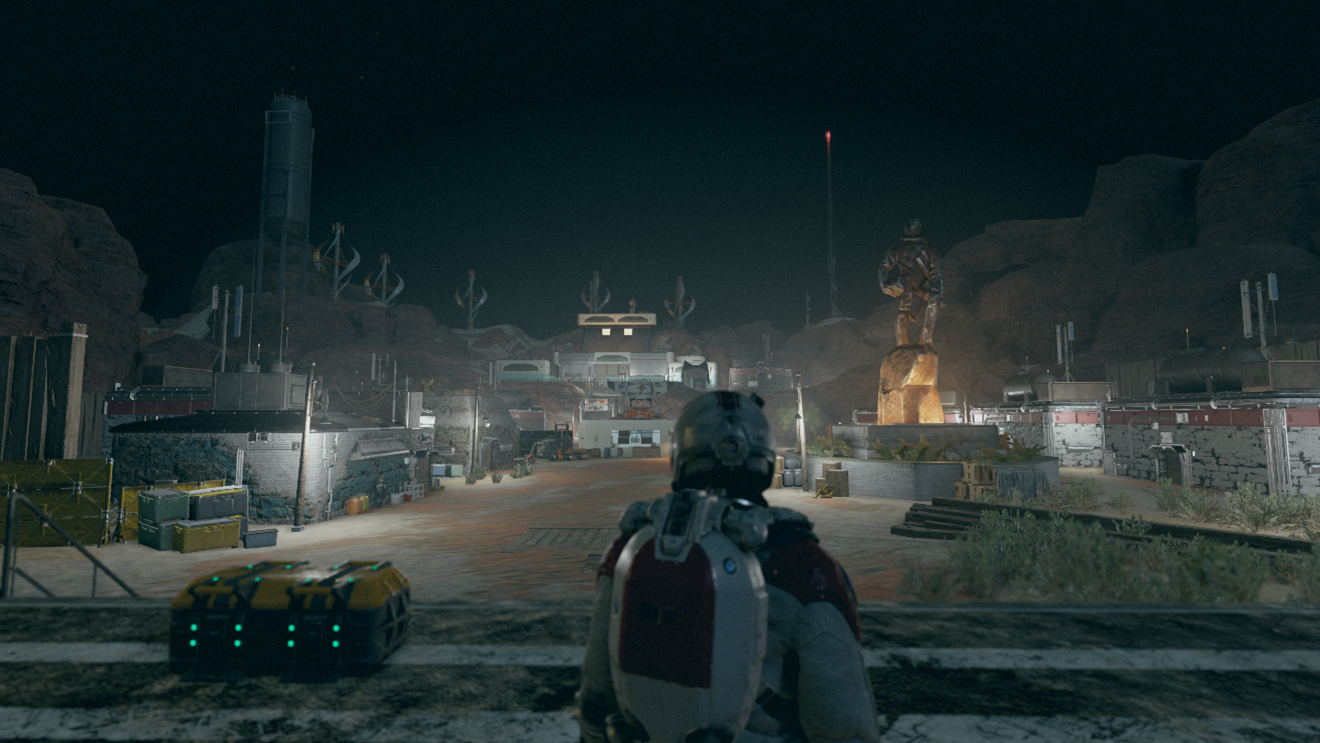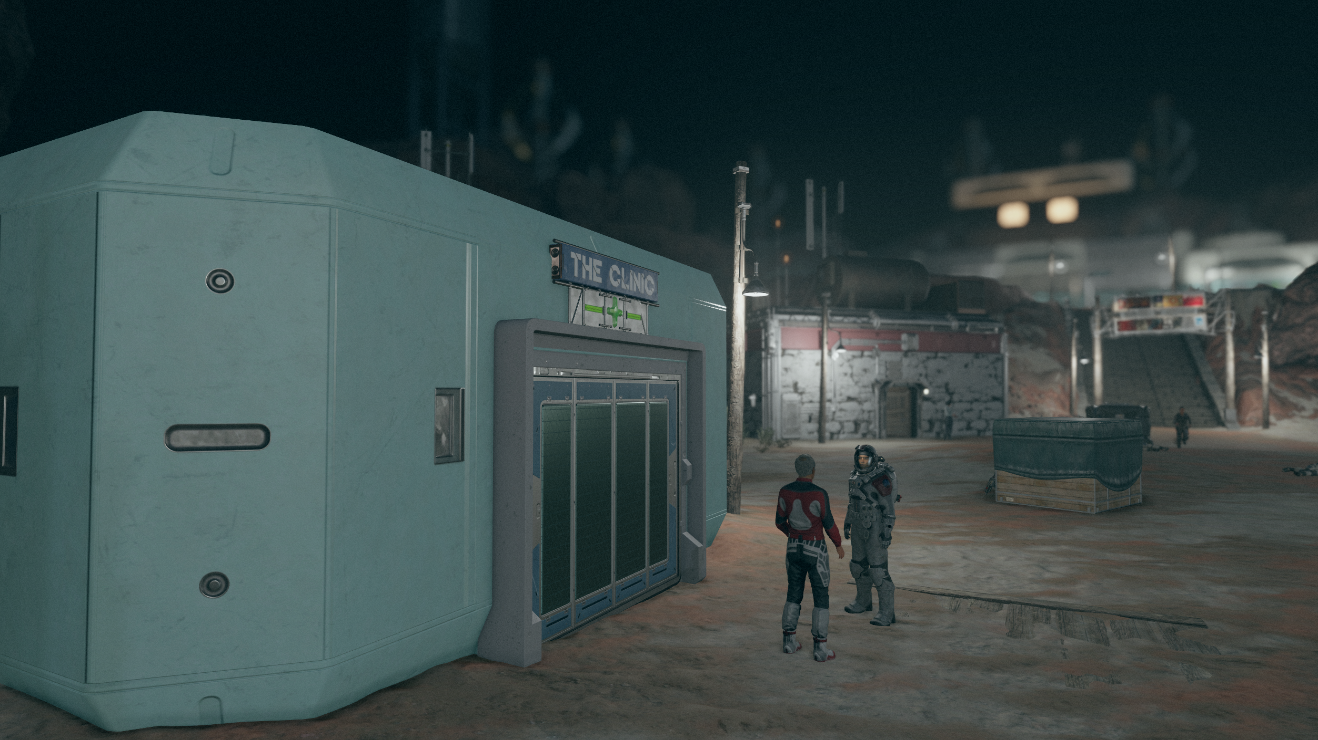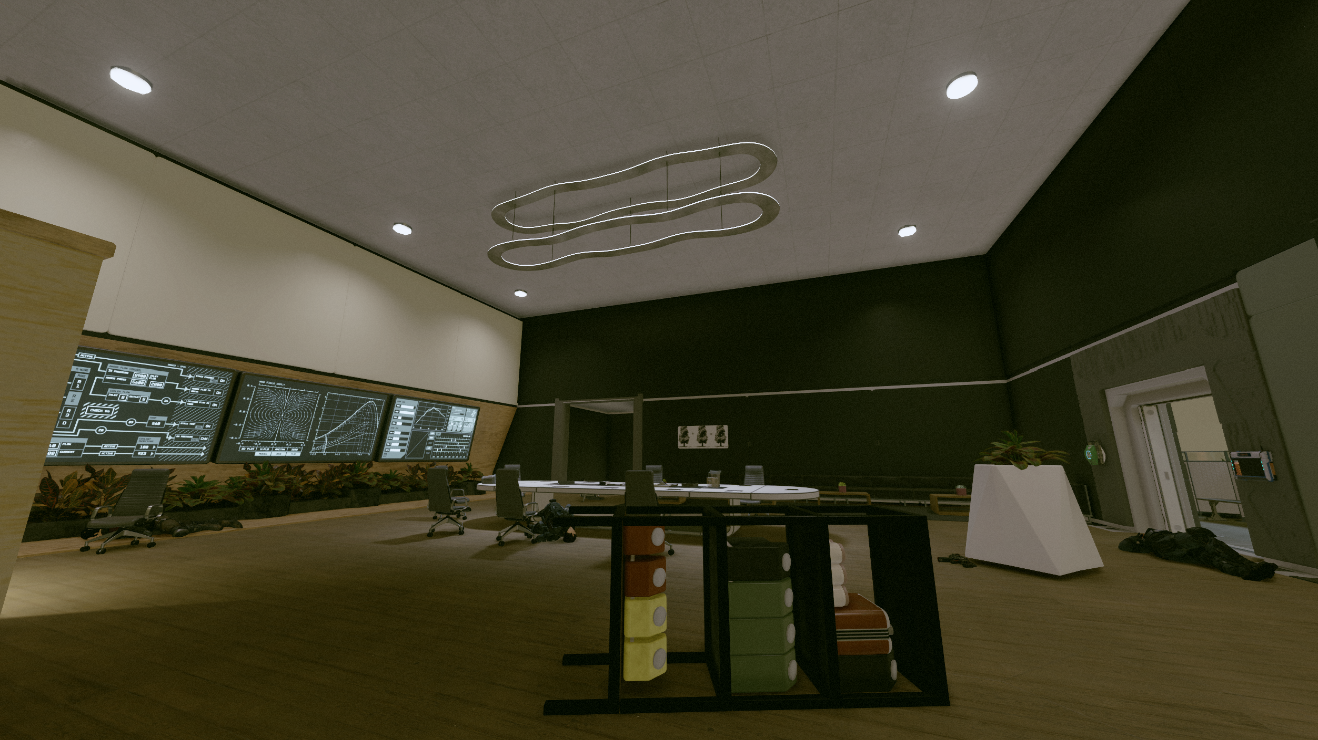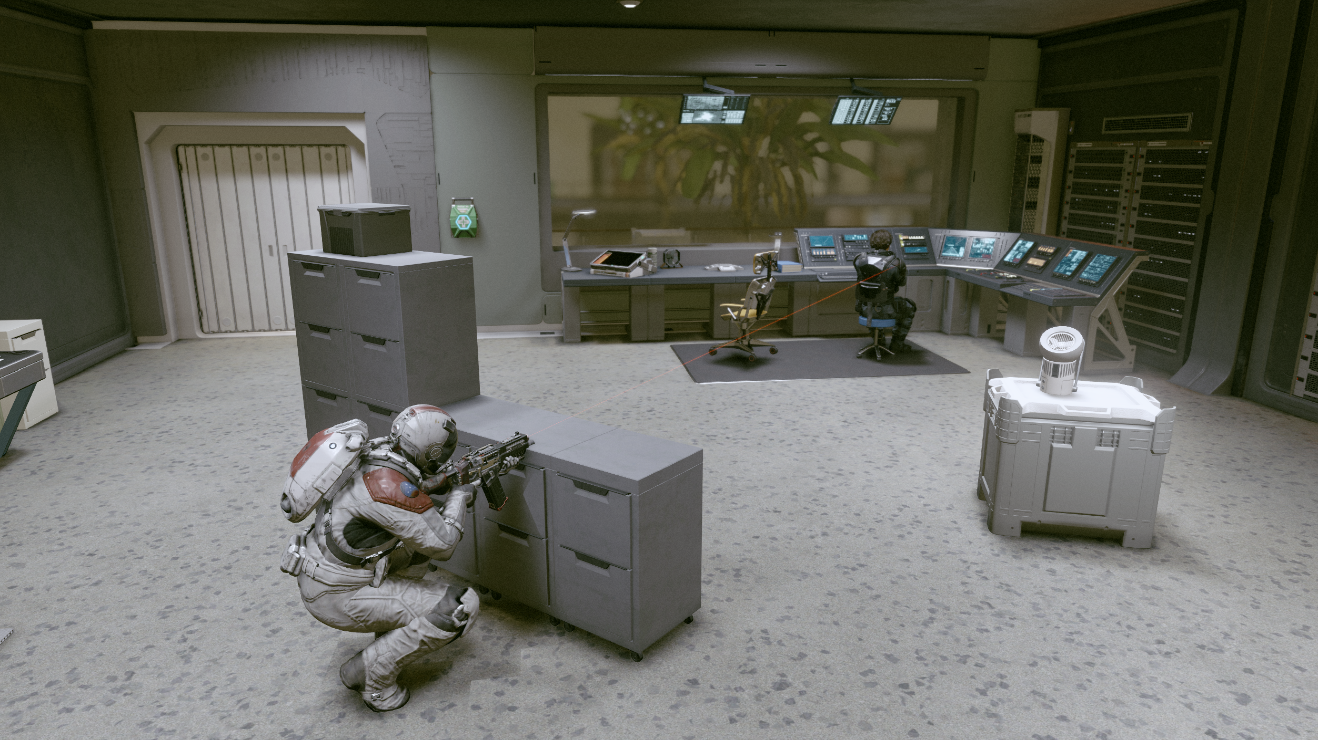A Starfield Quest
Justice Violence
Justice Violence is a single-player Starfield level that the player needs travels to the village to investigate the violent incidents, discovering that the riot was caused by a corporation led by Raymond. Players can use mechanics such as theft, persuasion, lockpicking, and stealth to approach the quest in different styles. The level was designed and developed solo over the course of approximately 300 hours.
Playthrough Video
Goal
For example, in this scene, players encounter the village interior for the first time. I strategically combined diverse lighting effects and carefully arranged objects to guide player attention. Players immediately notice a large statue placed prominently nearby, serving as a clear landmark and the central focal point of the village. Additionally, I employed a two-layered design approach, positioning the most significant building prominently on the hilltop at the back, effectively signaling the player's ultimate goal. Simultaneously, players can clearly identify their current objective located downhill, creating a coherent and engaging framing of their journey.
I made extensive use of sightlines and conveyance techniques to clearly guide players toward their objectives. In the scene shown above, which is the first interior view players encounter, I strategically positioned two trees to create a framing effect. These trees serve not only as an indoor landmark but also naturally draw the player's attention toward the space between them. Additionally, I designed an event where the boss visibly retreats into a room before combat, using specific AI packages in Creation Kit to achieve this behavior. To further reinforce clarity, I implemented a scripted door mechanism that players can open and close, with green and red lights explicitly indicating its operational status, clearly signaling its importance as a subsequent objective. Finally, I incorporated a red wire that visually connects the door to a control area, intuitively guiding players' sight along this path and clearly communicating the next goal: accessing the control room to unlock the boss’s door.
To enrich the narrative, I explored various ways to add depth to the story and ultimately chose to use in-game logs to reveal key character traits and subtly hint at events that had occurred in the area. These logs serve as indirect storytelling tools, providing background details that deepen the player's understanding of the world. To further support player comprehension, I implemented a follower system that assists in interpreting important log entries. The follower explains key points and also enables players to ask follow-up questions based on the content of the logs, allowing for a more interactive and layered storytelling experience. Additionally, I used scripts to ensure that logs found on corpses automatically open upon discovery, creating a smoother and more immersive gameplay flow.
Through the carefully crafted narrative interactions, I aimed to enrich the depth of the story by infusing each NPC with distinctive personalities, detailed dialogues, and thoughtfully designed conversation choices, providing narrative enthusiasts ample content to explore. The level also emphasizes gameplay freedom, actively supporting various player abilities, such as lockpicking and persuasion, allowing diverse approaches to tackle in-game challenges. Additionally, I intentionally designed an emotionally complex ending without a perfect solution, compelling players to deeply reflect on their choices, leaving a memorable and thought-provoking experience. Furthermore, I strategically utilized conveyance and sightlines within the open-world environment, clearly guiding players toward their objectives while preserving the immersive freedom of exploration.
In this scene, I present an example of the extensive NPC interactions designed throughout my level. This particular character is an optional NPC with whom players can engage in multi-layered dialogues. Players have the opportunity to inquire about key storyline-related information, as well as discuss everyday topics, gaining deeper insights into each NPC’s motivations and distinct personalities. Additionally, I implemented numerous secondary dialogue branches, allowing players to delve deeper into conversations and uncover additional layers of context. This structured approach enables players to naturally progress from one question to another, creating a meaningful and immersive conversational experience.
Design
When designing the support for multiple gameplay approaches, I spent considerable time refining the player experience. Initially, my concept allowed players to unlock different skills based on character levels, which would enable varied gameplay experiences and let them bypass certain content. However, I soon realized this approach risked wasting significant amounts of carefully crafted content and, due to scope constraints, could also lead to numerous bugs and unintended issues. To address this, I introduced several thoughtful restrictions, ensuring that while players still had the freedom to complete objectives using various skills, they wouldn't miss essential content.
For instance, in the scene shown above, players can obtain a key from a security guard using multiple approaches, but all methods revolve specifically around interacting with this character, minimizing unnecessary distractions and keeping the player's focus clearly on acquiring the key. Additionally, I employed subtle guidance rather than explicit instructions. Using phrasing like "find a way to acquire the key," instead of directly instructing players to eliminate the guard. By carefully positioning certain items within the environment, I hinted at stealth as a viable option, encouraging players to sneak and pickpocket the guard without explicitly dictating their actions.
Additionally, I designed a looping gameplay structure within the interior space. In the earliest version, the right half of the level was missing, which resulted in an uneven flow and a less engaging indoor experience. To address this issue, I expanded the right side of the area by adding several explorable rooms and connecting them through hallways. This not only improved the pacing of the level but also provided players with more opportunities for exploration and discovery, making the interior feel more complete and dynamic.













